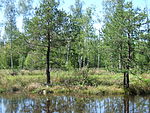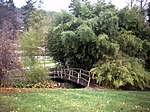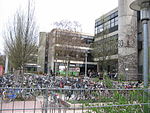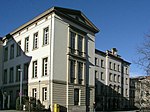Bebenhausen

Bebenhausen is a village (pop. 347) in the Tübingen district, Baden-Württemberg, Germany. Since 1974 it is a district of the city of Tübingen, its least populous one. It is located 3 km north of Tübingen proper (about 5 km northeast of the city centre), in the southeastern part of the protected landscape of the Schönbuch, a dense forest. Bebenhausen is famous for its monastery, Bebenhausen Abbey, founded in 1183 by Count Palatine Rudolph of Tübingen. Early 19th century the monastery became a hunting palace for the kings of Württemberg. King William II of Württemberg lived there until his death in 1921, his wife Princess Charlotte of Schaumburg-Lippe until her death in 1946. It became the seat of Württemberg-Hohenzollern from 1947 and until 1952 when Baden-Württemberg was created. In 1974, Bebenhausen became a district of Tübingen.
Excerpt from the Wikipedia article Bebenhausen (License: CC BY-SA 3.0, Authors, Images).Bebenhausen
Schönbuchstraße,
Geographical coordinates (GPS) Address Nearby Places Show on map
Geographical coordinates (GPS)
| Latitude | Longitude |
|---|---|
| N 48.559722222222 ° | E 9.06 ° |
Address
Schönbuchstraße 24
72074
Baden-Württemberg, Germany
Open on Google Maps







